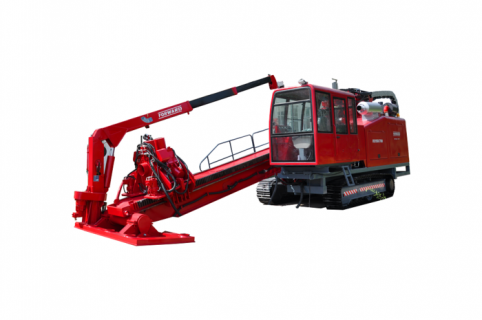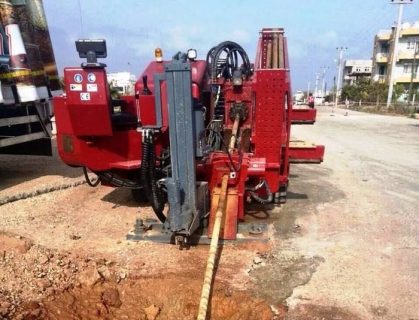Horizontal directional drilling rigs of FORWARD brand have already proved themselves in Russia and the CIS countries, more than 200 drilling rigs with pulling force from 11 to 550 tons are in operation there. FORWARD HDD rigs performed dozens of the most complex objects in heavy rocky soils Turkey.
The supply of FORWARD equipment is actively expanding to Europe and Africa. Over the past few years, FORWARD is building up its potential in the countries of southeast Asia.
The FORWARD concept is a highly quality assembly, reliable components from famous manufactures and services center all over the world. Drilling rigs are quite simple in operation and maintenance, an individual approach to each client client allows meet the challenge of equipment’s adaptation to different climatic and geological conditions , as well as the needs of specific projects.
FORWARD released RX series HDD rig with pulling force of 40000 Nm. FORWARD RX40 X160 turned out to be very powerful , and at the the same time compact, the manufacturer “armed” the machine with a number of technical improvements and new features.
The company is ready to cooperate with all customers providing not only standard variants from firm’s production line, but also they can produce drilling equipment in accordance with customers’ technical task. They design a unique drilling equipment together.
Features
Horizontal directional drilling (HDD) is a trench-less construction method used to install pipelines of various sizes and materials below the ground surface. Trench-less technologies, such as horizontal directional drilling, pipe bursting and slip lining allow the entire water supply and drainage system of a city to be replaced without causing a major traffic jam and incurring the enormous cost of restoring streets and roads.
The HDD rigs differ from each other in appearance and by technical characteristics. There are several categories of horizontal directional drilling, which are based on the physical scale of the operation, including the size of pipes to be installed as well as the overall bore path distance and depths to be achieved. 
The mini-HDD
The mini-HDD, also known as “guided boring”, is typically used for the relatively shorter distances, shallower depths, and smaller diameter pipes associated with local distribution lines, in comparison to maxi-horizontal directional drilling (maxi-HDD), typically used for longer distances, greater depths, and larger diameter pipes, such as major river crossings.
Mini-HDD is typically employed for placing pipes up to 12 inches (305mm) diameter, and boring segments less than 600 feet (182 m) in length, at depths up to 15 feet (4,5 m). Maxi-HDD is capable of accurately boring holes on the order of a mile in length, and placing pipes of 48 inches (1219,2 mm) or greater, at depths up to 200 ft (61m).
Mobile HDD
Mobile HDD rig usually has a crawler. The weight of equipment exceeds 5 ton. In an urban setting, the pieces of rubber are mount on the crawler for protecting of the pavement. When making a selection of the HDD rigs, it’s also necessary to pay attention to transportation sizes of the drilling equipment. The low loader is most commonly used for transportation.
We can distinguish several stages in the process of HDD. It is necessary above all to drill a pilot bore. For that purpose, a transmitter of guidance system is placed on the drilling head (transmitter housing), which can be controlled (monitored) by special receiver. Then diameter of the pilot bore is expanded to the right size by special drill tools (reamer). The selection of the reamer depends on complexity of the soil. The final stage is pulling the pipe. You can learn the more detailed description of HDD technical process in our article “About HDD Technology”.
During drilling process, it’s necessary to use a special bentonite slurry. After the end of HDD works, the bentonite is pumped out and utilized by special equipment (Slurry Pump).
The HDD rigs are usually purchased in specialized companies. In order to choose the right equipment, it is necessary to pay attention to the following selection criteria:
- Length of the laying pipes
- Diameter of the laying pipes
- Type of the soil
- Specific features of the construction
It’s necessary to be consulted by HDD experts for making the most appropriate choose of HDD equipment.

